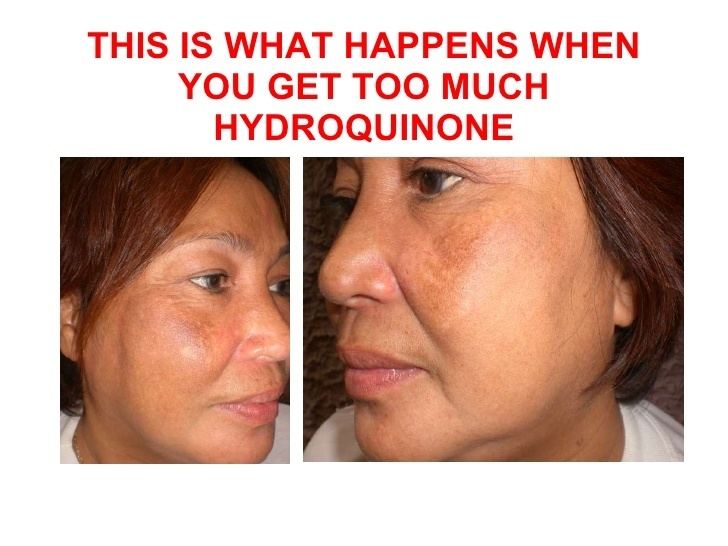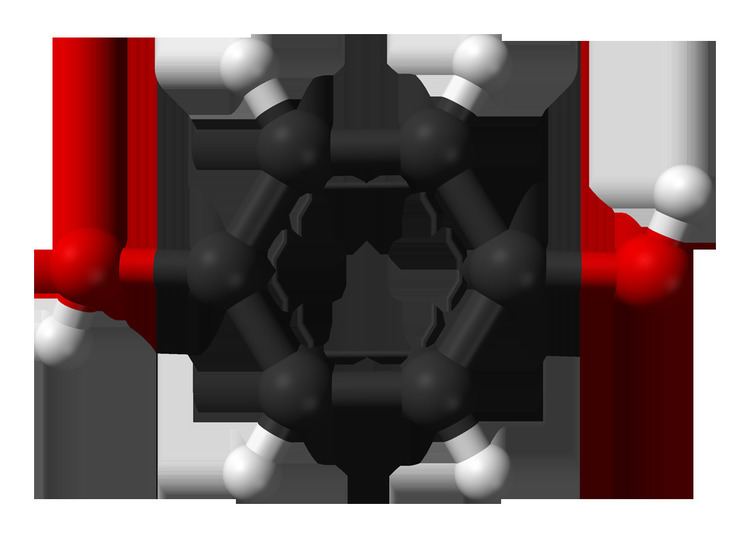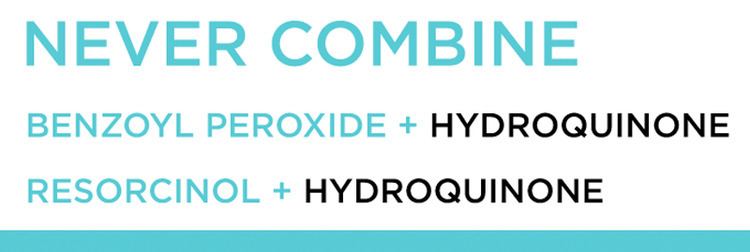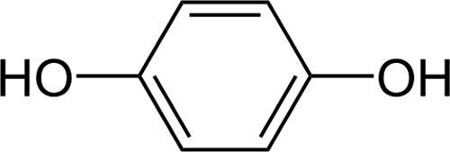Formula C6H6O2 Molar mass 110.11 g/mol Boiling point 287 °C Soluble in Water | Related compounds Melting point 172 °C IUPAC ID Benzene-1,4-diol Density 1.3 g/cm³ | |
 | ||
What are the side effect of hydroquinone and how to solve it
Hydroquinone, also benzene-1,4-diol or quinol, is an aromatic organic compound that is a type of phenol, a derivative of benzene, having the chemical formula C6H4(OH)2. Its chemical structure, shown in the table at right, features two hydroxyl groups bonded to a benzene ring in a para position. It is a white granular solid. Substituted derivatives of this parent compound are also referred to as hydroquinones. The name "hydroquinone" was coined by Friedrich Wöhler in 1843.
Contents
- What are the side effect of hydroquinone and how to solve it
- Hydroquinone
- Production
- Reactions
- Redox
- Amination
- Uses
- Skin depigmentation
- Natural occurrences
- References

Hydroquinone
Production
Hydroquinone is produced industrially by two main routes.

Other, less common methods include:

Reactions

The reactivity of hydroquinone's O-H groups resembles other phenols, being weakly acidic. The resulting conjugate base undergoes easy O-alkylation to give mono- and diethers. Similarly, hydroquinone is highly susceptible to ring substitution by Friedel-Crafts reactions such as alkylation. This reaction is exploited en route to popular antioxidants such as 2-tert-butyl-4-methoxyphenol ("BHA"). The useful dye quinizarin is produced by diacylation of hydroquinone with phthalic anhydride
Redox

Hydroquinone undergoes oxidation under mild conditions to give benzoquinone. This process can be reversed. Some naturally occurring hydroquinone derivatives exhibit this sort of reactivity, one example being coenzyme Q. Industrially this reaction is exploited both with hydroquinone itself but more often with its derivatives where one OH has been replaced by an amine.
Amination
An important reaction is the conversion of hydroquinone to the mono- and diamino derivatives. Methylaminophenol, used in photography, is produced in this way:
C6H4(OH)2 + CH3NH2 → C6H4(OH)(N(H)CH3) + H2OSimilarly diamines, useful in the rubber industry as antiozone agents, are produced similarly from aniline:
C6H4(OH)2 + 2 C6H5NH2 → C6H4(N(H)C6H5)2 + 2 H2OUses

Hydroquinone has a variety of uses principally associated with its action as a reducing agent that is soluble in water. It is a major component in most black and white photographic developers for film and paper where, with the compound metol, it reduces silver halides to elemental silver.

There are various other uses associated with its reducing power. As a polymerization inhibitor, hydroquinone prevents polymerization of acrylic acid, methyl methacrylate, cyanoacrylate, and other monomers that are susceptible to radical-initiated polymerization. This application exploits the antioxidant properties of hydroquinone.

Hydroquinone can undergo mild oxidation to convert to the compound parabenzoquinone, C6H4O2, often called p-quinone or simply quinone. Reduction of quinone reverses this reaction back to hydroquinone. Some biochemical compounds in nature have this sort of hydroquinone or quinone section in their structures, such as Coenzyme Q, and can undergo similar redox interconversions.
Hydroquinone can lose an H+ from both to form a diphenolate ion. The disodium diphenolate salt of hydroquinone is used as an alternating comonomer unit in the production of the polymer PEEK.
Skin depigmentation
Hydroquinone is used as a topical application in skin whitening to reduce the color of skin. It does not have the same predisposition to cause dermatitis as metol does. This is a prescription only ingredient in some countries, including the member states of the European Union under Directives 76/768/EEC:1976.
In 2006, the United States Food and Drug Administration revoked its previous approval of hydroquinone and proposed a ban on all over-the-counter preparations. The FDA stated that hydroquinone cannot be ruled out as a potential carcinogen. This conclusion was reached based on the extent of absorption in humans and the incidence of neoplasms in rats in several studies where adult rats were found to have increased rates of tumours, including thyroid follicular cell hyperplasias, anisokaryosis (variation in nuclei sizes), mononuclear cell leukemia, hepatocellular adenomas and renal tubule cell adenomas. The Campaign for Safe Cosmetics has also highlighted concerns.
Numerous studies have revealed that hydroquinone can cause exogenous ochronosis, a disfiguring disease in which blue-black pigments are deposited onto the skin, if taken orally; however, skin preparations containing the ingredient are administered topically. The FDA has classified hydroquinone in 2006 as a safe product - generally recognized as safe and effective (GRASE), however additional studies under the National Toxicology Program (NTP) were suggested in order to determine whether there is a risk to humans from the use of hydroquinone. NTP evaluation showed some evidence of long-term carcinogenic and genotoxic effects
While using hydroquinone as a lightening agent can be effective with proper use, it can also cause skin sensitivity. Using a daily sunscreen with a high PPD (persistent pigment darkening) rating reduces the risk of further damage. Hydroquinone is sometimes combined with alpha hydroxy acids that exfoliate the skin to quicken the lightening process. In the United States, topical treatments usually contain up to 2% in hydroquinone. Otherwise, higher concentrations (up to 4%) should be prescribed and used with caution.
While hydroquinone remains widely prescribed for treatment of hyperpigmentation, questions raised about its safety profile by regulatory agencies in the EU, Japan, and USA encourage the search for other agents with comparable efficacy. Several of such agents are already available or under research, including azelaic acid, kojic acid, retinoids, cysteamine, topical steroids, glycolic acid, and other substances.
Natural occurrences
Hydroquinones are one of the two primary reagents in the defensive glands of bombardier beetles, along with hydrogen peroxide (and perhaps other compounds, depending on the species), which collect in a reservoir. The reservoir opens through a muscle-controlled valve onto a thick-walled reaction chamber. This chamber is lined with cells that secrete catalases and peroxidases. When the contents of the reservoir are forced into the reaction chamber, the catalases and peroxidases rapidly break down the hydrogen peroxide and catalyze the oxidation of the hydroquinones into p-quinones. These reactions release free oxygen and generate enough heat to bring the mixture to the boiling point and vaporize about a fifth of it, producing a hot spray from the beetle's abdomen.
Farnesyl hydroquinone derivatives are the principal irritants exuded by the poodle-dog bush, which can cause severe contact dermatitis in humans.
Hydroquinone is thought to be the active toxin in Agaricus hondensis mushrooms.
Hydroquinone has been shown to be one of the chemical constituents of the natural product propolis.
It is also one of the chemical compounds found in castoreum. This compound is gathered from the beaver's castor sacs.
In bearberry (Arctostaphylos uva-ursi), arbutin is converted to hydroquinone.
